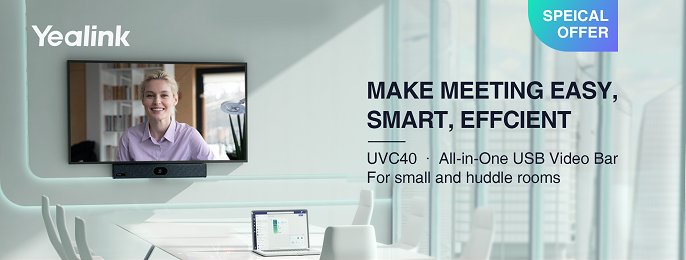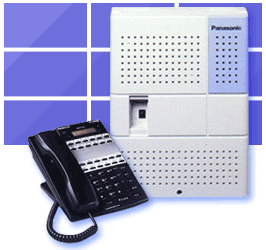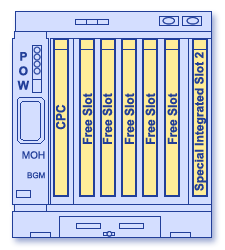
 The DBS 576 HD is designed for small to medium sized applications, and incorporates several high-end PBX functions. With its powerful High Density Backplane, the HD can expand easily from 8 extensions to 240 ports with just two cabinets. The DBS 576HD system has been designed not only to provide growth for your business, but to give you all the tools you need to provide business solutions. The DBS can also be equipped to provide high level applications for your business such as Automatic Call Distribution, Integrated Voice Mail, Wireless Handsets, and Computer Telephony applications, to name just a few. For small office environments, the DBS 576HD is an ideal system that can provide big business solutions at an affordable price. In fact, the HD provides all of the DBS 576 functionality, whether it's ISDN digital services direct to the desktop, or multiple locations networked together.
The DBS 576 HD is designed for small to medium sized applications, and incorporates several high-end PBX functions. With its powerful High Density Backplane, the HD can expand easily from 8 extensions to 240 ports with just two cabinets. The DBS 576HD system has been designed not only to provide growth for your business, but to give you all the tools you need to provide business solutions. The DBS can also be equipped to provide high level applications for your business such as Automatic Call Distribution, Integrated Voice Mail, Wireless Handsets, and Computer Telephony applications, to name just a few. For small office environments, the DBS 576HD is an ideal system that can provide big business solutions at an affordable price. In fact, the HD provides all of the DBS 576 functionality, whether it's ISDN digital services direct to the desktop, or multiple locations networked together.
- Two HD cabinets can be combined together to reach the full capacity of the system.
- 0 trunks and 8 extensions initial configuration. Simply add trunk and extension cards to meet your size requirement.
- High Density (HD) Cards
- 16 and 24 port extension cards
- 24 port T1 and ISDN PRI cards
- Built in Voice processing using the Integrated Feature Module (IFM) and the Courier voice processing application.
- Local Area Network TAPI for compute telephony integration.
- Digital T1/ISDN and Analog networking interfaces with centralized attendant and voice mail.
- Flash Memory for port additions and software upgrades.
- Trunk and Station side ISDN for high bandwidth applications such as videoconferencing and Internet connection.
- Wireless:single and multi-cell capabilities.
- Trunk and Station Side ISDN for High Bandwidth
- Wireless: Single and Multi-Cell Capabilities
- Voice Mail System Options.
PanaVOICE is the recommended Voice Mail System for use with the DBS 576 HD. PanaVOICE is fully digital (connects to the DBS 576 HD digital ports), and comes in an integrated and non-integrated version. The integrated version provides improved messaging via the API port. Click here to learn more about DBS 576 HD to learn more about the PanaVOICE Voice Mail System. - DBS Telephone Options.
Panasonic offers a wide variety of options for telephones so tha you can select the one that is right for you. All phones are digital, and except for the DLST, have a microphone and speaker for Hands-Free Answerback and Off-Hook Monitoring (the ability to conduct calls on-speaker without lifting the handset). All display phones are "speakerphones", meaning they have additional built-in circuitry for background-noise cancellation during outside calls. The Small-Display phones have a 2-line LCD; the Large-Display phone has a 7-line LCD. Click here to learn more about Panasonic DBS phones.

- Smaller, more compact cabinet.
The DBS HD cabinet is a scaled down version of the cabinet used with the DBS 576 system. This is possbile because the DBS 576 HD uses a unique High-Density backplane. The result is a smaller system with the power of the DBS 576. It's expandable from 8 to 116 ports. - Configures Automatically.
The DBS HD system automatically inspects cards installed and assigns extension numbers, trunk numbers, etc. - Full Flexible Slot Availability
Supports high-density cards in all flexible slots without losing the ability to use other slots. - Univeral ports.
The DBS 576 HD offers flexible slot configuration. You can mount Trunk or Extension Cards in any of the 5 Free Slots in the cabinet. With this built-in flexibility, you can design the system the way you want it: efficiently, cost-effectively, whichever way makes the most sense. (In other words, YOU control the system - the systme doesn't control you.) - Seamless compatibility with DBS 576.
Most cards used in the HD can also be installed in the DBS 576. This is a valuable feature should you ever need the additional ports and extensions offered in the DBS 576. Simply remove the cards from the HD cabinet and insert them in the DBS 576. - Flash memory upgrades.
No more chip change-outs. No more complicated hookups. No more waiting forever to download/upload from the phone system. The DBS 576 HD phone system can be upgraded in minutes with a small diskette known as a compact flash card. Simply plug it onto the processor card, and perform a few simple programming steps. That's all there is to it: the system now contains the latest software release. - Voice Recognition Phones
With these special phones and DBS 576 HD technology, users can literally tell their phones what to do. Instead of dialing your home phone number, for example, press the Voice Recognition key and say "Home." The phone will automatically call your house. Or press the same key and say "Jeff." The phone will call Jeff for you. The future is right here. - Dynamic Bandwidth Allocation for ISSN digital switching.
The DBS 576 HD provides the ability to allocate bandwidth on demand to several different sources, via hardware installations of special ISDN adapters. This powerful technology can be used to perform different applications from a single phone outlet. It means you can do video-conferencing, data transmission, multiple phones, voice, etc. - all from the same station position. In fact, the DBS 576 HD offers ISDN support with both BRI (Basic Rate Interface) and PRI (Primary Rate Interface) capability. ISDN provides fully digital signaling, combines voice and data into one signaling system, and supports large-bandwidth applications such as video-conferencing. - Computer Telephony interface capability.
Panasonic has developed proprietary software for several Computer Telephony applications, in which the desktop phone and the PC computer merge together into a single entity. The merger works like this:- Install a special board inside the computer.
- Install Panasonic's software in Windows.
- Plug the phone's handset into the board.
- Plug the board into the phone jack.
- Networking services.
The DBS 576 HD offers several ways to set up networking - typing multiple DBS 576 HD systems together through the public switching network. E&M Tie Lines let you connect directly to another DBS 576 HD system using a leased voice line. T-1 Networking lets you tie multiple systems together through the network, so that (for example) when one location closes for the day, its calls can be picked up by another location across the country. A user can also turn a long-distance call into a local one by accessing another location and then dialing the number as a local call. The system can also be set up in a Tandem (T-1 Network) environment, adding further benefits to the users at each location. For example, each switch can analyze the number dialed, and automatically route the call the other locations, extensions, or go through another location's switch to place a call. - Automatic Call Distribution
With the DBS 576 HD's Built-in ACD option, calls can be automatically distributed to the least-busy extension first, or on a next-available-extension basis. If the extension doesn't answer the call, you can program the system to continue searching, transfer to a particular extension, transfer to Voice Mail, or disconnect the call. You can control what the caller hears while he/she is waiting. Supervisors can instantly access the current status of all agents right from their desk using a Large-Display telephone - no need for costly computer programs to provide "real-time reporting". MIS reports can also be generated.
Cabinet 
The DBS 576 HD consists of one cabinet capable of supporting up to 116 ports. Contained within the cabinet are 7 slots (1 power, 1 CPC and 5 flexible slots), 8 built-in DEC circuits, and a connector for a 4 AEC option/API option. Peripherals such as paging speakers, external music-on-hold sources, background music sources, PCs, printers, and SMDR connect to the unit cards or the mother board. Each cabinet may include the following:
-
DBS 576 HD Cards And Accessories:
- 48V Cabinet Power Supply (VB-44033)
A Ė 48V power supply must be installed in a cabinet when either DID, E8 M and/or Ground Start Trunks are employed in the cabinet. - Control Processor Card (68-port) - CPC-HS (VB-44440)
The CPC-HS card is a standard CPU unit for a system with up to 28 extensions and up to 68 ports. The card uses a 16-bit CPU and does not support the DEC 16/24. Included are a time switch (9 Highway x 9 Highway), a 4-circuit MFR (DTMF receiver circuit), three 8- party conference circuits, service tone, a DTMF transmitter, an input terminal for external hold tone and BGM source (RCA jack), EPA output (RCA jack), a connecting terminal for synchronization package (VB-44460), and an interface connector for a compact flash card. The system control program is downloaded to the internal memory of the system through the compact flash card. Memory is retained with a backup battery. - Network Synchronizing Unit - SYNC (VB-44460)
This unit provides network synchronization and is required with digital circuits such as ISDN and T1. The SYNC card synchronizes the PCM clock with an outside resource. When digital circuits are used, one SYNC card is required and installs on the CPC-HS or CPC-HM card. - Loop Start Trunk Card - LTRK/4 (VB-44514)
This Loop Start Card supports up to 4 loop start CO lines and can be installed in any flexible slot. The card meets UL1459 safety requirements, and can be directly connected to CO lines. - Loop Start Trunk Card - LTRK/8 (VB-44510)
The Loop Start Card supports up to 8 loop start CO lines and can be installed in any flexible slot. This card meets UL1459 safety requirements, and can be directly connected to CO lines. - Loop Start/Ground Start Trunk Card - LGTRK/8 (VB-44511)
This card supports both Loop Start and Ground Start Trunks. Up to 8 CO lines of any combination of types can be connected. This card installs in any flexible slot. An internal Ė 48V Power Supply (VB- 44022) must be installed and used when using the Loop Start/Ground Start Card. This card meets UL1459 safety requirements, and can be directly connected to CO lines. - Caller ID Unit - CID/4 (VB-44515)
This card supports Caller ID on loop start trunks. The card "piggybacks," or installs, directly on top of the Loop Start Trunk Card (VB-44514), and supports all four of that cardís circuits for Caller ID. - Caller ID Unit - CID/8 (VB-44513)
This card supports Caller ID on loop start trunks. The card "piggybacks," or installs, directly on top of the Loop Start Trunk Card (VB-44510), and supports all eight of that cardís circuits for Caller ID. - ISDN Primary Rate Interface Card (T/S-point) PRI/23 (VB-44540)
This supports T-point Integrated Services Digital Network (ISDN) Primary Rate Interface (PRI) (23B+D/24B:1544kbps) and also S-point ISDN PRI. The PRI card can be set to support either 8, 16 or 23/24 channels. Unlike most other cards, due to the interaction between card slots, the PRI card must be installed in specific Free Slots. With the HDís new high-density design, no other neighboring slots are restricted when this card is installed. T-point PRI requires a DSU (Digital Service Unit) for connection to the carrier circuit. A Network Sync card is also required. - ISDN Basic Rate Interface Card (T-point) - TBRI/4 (VB-44530)
This supports T-point Integrated Services Digital Network (ISDN) Basic Rate Interface (BRI) (2B+D:144kbps). This card can be installed in any flexible slot. Up to 4 T-point ISDN lines can be connected to each TBRI/4 Card. The T-point BRI Unit supports information transferring capability (speech and data) at the CO trunk. The TBRI/4 Card connects via NT1 (Network Termination Unit/Type 1) to the T-point ISDN interface. - E & M Trunk Card - E&M/4 (VB-44560)
This card supports E8 M type tie line interface (Speech pass 4W/2W, Control line 4W). The signaling methods that are supported include Immediate and Wink methods. Each E8 M card includes 4 circuits. When installed in any flexible slot, the E&M Trunk Card supports call signal detection and answer from other PBX or carrier equipment, calling to the E8 M tie line, dial sending and speech. The ELM interface can connect to another PBX with E8M capability (Types 1, and 2 are supported). External safety devices (available from standard telecommunications suppliers) are required when installing this unit outside the building. - DID Trunk Card - DIDTR/8 (VB-44520)
This card supports 8 DID incoming CO lines using Immediate and Wink signaling methods. The DID can be either Dial Pulse (10PPS) or DTMF (only for Wink). DTMF circuits are used when the Wink method is selected. An internal Power Supply (VB-44022) must be installed in the cabinet with the DID Trunk Card. - T-1 Interface Card - T-1 (VB-44550)
The T-1 interface is a digital CO line card that provides up to 24 voice channels over a four-wire circuit. The T-1 card can be set to support either 8, 16, or 24 channels. Unlike most other cards, due to the interaction between card slots, the T-1 card must be installed in selected flexible card slots. With the HDís new high-density design, no other neighboring slots are restricted when this card is installed. The T-1 interface requires a DSU or CSU for connection to the carrier circuit. A Network Sync card is also required. - Digital Extension Card - DEC/8 (VB-44610)
This card provides 8 digital circuits. Each circuit supports the Panasonic Digital Key Telephone, Digital Single Line Telephone, DSS/72, and EM/24. Supply voltage for the telephones is supplied by the digital circuits. This card can be installed in any flexible slot. - Digital Extension Card - DEC/16, DEC/24 (VB-44612,VB-44613)
These two cards provide 16 and 24 circuits, respectively, and can only be used with the CPC-HM. Each circuit supports the Panasonic Digital Key Telephone, Digital Single Line Telephone, DSS/72, and EM/24. Supply voltage for the telephone is supplied by the digital circuits. This card can be installed in any flexible slot. - Analog Extension Card - AEC/8 (VB-44620)
This card provides 8 analog circuits. Each circuit supports standard analog telephone devices such as analog telephones, answering machines, fax machines, modems, cordless telephones, etc. The connected device(s) can be either pulse dial (rotary) or DTMF. Ringer circuitry is built into the card. This card can be installed in any flexible slot. - ISDN Primary Rate Interface Card (T/S-point) - PRI/23 (VB-44540)
The PRI/23 card supports both S-point and T-point ISDN.
- ISDN Basic Rate Interface Card (S-point) - SBRI/4 (VB-44630).
This unit supports Basic Rate Interface (2B+D:144kbps) for S-point ISDN. Each card provides 4 BRI circuits. This card can be installed in any flexible slot. The S-point BRI Unit supports information transferring capability (speech and data) at the CO trunk. - Extension MDF Interface - MDF-EXT (VB-44611)
The Extension MDF Interface provides for connection from the cabinet to the MDF using standard 25- pair cables. A cable is run from the front of the extension card to the Extension MDF card. Each Extension MDF card can support the SAEC, DEC/8, or AEC/8 extension card, and is required if more than two of these extension cards are used. This interface is not required when using the DEC 16/24 card. - DTMF Multi-Frequency Receiver Card - MFR/8 (VB-44110)
The MFR/8 card accepts dialed DTMF tones and determines the dialed digits. Each card contains 8 receiver circuits. This card can be installed in any flexible slot. The maximum number of MFR/8 cards that can be installed is one. - Conference Card (4 circuits) - CONF (VB-44120)
This is a conference speech card with four 8-party conference circuits. One conference card per cabinet can be installed into any flexible slot. An 8-party conference can consist of 8 extensions; 7 extensions + 1 external line; or 1 extension + 7 external lines (or any combination in between). - Application Processor Interface Card - API (VB-44131)
The API provides an interface path between the telephone systemís information BUS and a personal computer-based application (such as external integrated voice mail or external enhanced ACD). External interface: RS232C port (19200bps maximum) - Special Application Processor Interface Card - SAPI (VB-44132)
This 4-port card is the same as the API (VB-44131), above, but installs in special IS2 slot, and does not occupy a free slot. External interface: RS232C port (19200bps maximum)
Control Unit Processor Cards:
Trunk/Tie Line Cards:
Extension Cards:
Options:

